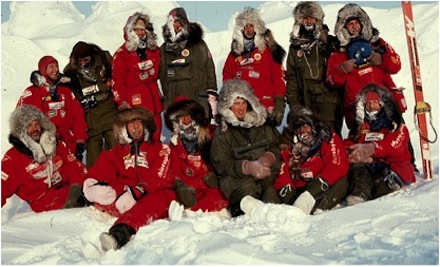Surrey Satellite Technology Ltd and the Surrey Space Centre are celebrating a remarkable thirty years of in-orbit operations from one of its earliest satellites, UoSAT-2, which was launched on a Delta rocket on 1st March 1984 from the Vandenberg Air Force Base in the USA.
UoSAT-2, the second satellite in a long history of 41 missions launched by SSTL to date, has always held a special significance and has remained a constant in the company's evolution from University spin-off to world-leading small satellite manufacturer.
Today, UoSAT-2 still transmits its VHF telemetry on a regular 11-day cycle and the on-board real-time clock still tells the time - although running somewhat late! The satellite's batteries are exhausted after some 160,000 charge cycles, and transmissions are now detectable only when it is sunlight, but the telemetry continues to be tracked by amateur radio satellite enthusiasts (AMSAT) worldwide - using the predictable transmissions to help calibrate their equipment.
Following the successful first microsatellite launch of UoSAT-1 from the Surrey team in 1981, NASA again offered a second launch opportunity - but with only 6 months warning! Rising to the challenge and literally working day-and-night, the Surrey team comprising about a dozen researchers and AMSAT members designed and built the 70kg UoSAT-2 microsatellite just in time for the launch as 'piggyback' passenger with NASA's LANDSAT-5. Incorporating many of the lessons learned from the first satellite, UoSAT-2 carried some novel experiments - a "Digitalker" speech synthesiser, specifically designed for school demonstrations of satellite telemetry and orbital physics, alongside experiments including magnetometers, an early CCD camera, a Geiger tube and a sensitive microphone to detect micro-meteoroid impacts.
In the days before GPS, UoSAT-2 provided a novel communication system for the 1988 Canadian-Soviet Ski-trek Arctic expedition, a group of intrepid explorers from Canada and the USSR who crossed the Arctic Ocean from Siberia to Ward Hunt Island, just off Canada, via the North Pole between March and June 1988.
The position of the skiers' emergency beacon was calculated daily by US and Soviet COSPAS-SARSAT ground stations, relayed to the Surrey Mission Control ground station by telex, and uploaded to the UoSAT-2 Digitalker which then 'spoke' the latitude and longitude of the ski party via its VHF beacon. In a sun-synchronous, 650km low Earth orbit, UoSAT-2 flew over the pole every 98 minutes at which point the group could receive the broadcast from the satellite using their small handheld VHF radio that was designed to work at very low temperatures.
There's more about the Ski-trek expedition, and a recording of the Digitalker, on the expedition home page at http://meerman.fsnet.co.uk/NorthPole/textpan.html
UoSAT-2 was one of the first satellites to prove that commercial grade microprocessors and memory chips, which had only just become readily available, mass produced and cheaper in the early 80s as part of the microcomputer revolution, could be used to build small, cost-effective yet capable satellites. SSTL proved the concept was viable and has gone on to build a highly successful business with over £500m of export orders currently going through its technical facility in the UK - including the 22 satellite navigation payloads for Europe's Galileo system.
Today, UoSAT-2 is the longest-serving of 13 satellites that SSTL and Surrey Space Centre track from groundstations in Guildford, UK.
Notes to editor:
More information about the 1988 Canadian-Soviet Ski-trek artic expedition can be found at: http://www.meerman.fsnet.co.uk/NorthPole/textpan.html
Digitalker example recording at: http://www.meerman.fsnet.co.ukNorthPole/sound/Digitalker.wav
Tracking and telemetry information on UoSAT-2 (known as Oscar-11 to the AMSAT community) can be found at: http://www.g3cwv.co.uk/oscar11.htm
About SSTL
Surrey Satellite Technology LImited (SSTL) is the world's leading small satellite company, delivering operational space missions for a range of applications including Earth observation, science and communications. The Company designs, manufactures and operates high performance satellite ground systems for a fraction of the price normally associated with space missions, with 600 staff working on turnkey satellite platforms, space-proven satellite subsystems and optical instruments.
Since 1981 SSTL has built and launched 41 satellites for 16 countries - as well as providing training and development programmes, consultancy services, and mission studies for ESA, NASA, international governments and commercial customers, with its innovative approach that is changing the economics of space.
Headquartered in Guildford, UK, SSTL is owned by Astrium BV, part of the Airbus Group. www.sstl.co.uk
About Surrey Space Centre, University of Surrey
The Surrey Space Centre (SSC), a Research Centre of the Faculty of Electronics and Physical Sciences (FEPS) at the University of Surrey, is a world leading Centre of Excellence in Space Engineering, whose aim is to underpin the technical development of the space industry through its advanced research programmes. SCC, comprising over 90 researchers and faculty specialising in small satellite techniques, develops new innovative technologies which are exploited by the space industry. It provides well-focused space engineering education, postgraduate and industrial short courses, training the next generation space scientists, engineers, entrepreneurs and business leaders.
www.surrey.ac.uk/SSC
